A Beginner’s Guide to Cat Adoption
Adopting a cat is taking the first step in a mutually rewarding relationship that will last a lifetime. Your furry new feline friend may take some time to adjust to their new surroundings, but don’t let that put you off. By adequately preparing before their arrival, you’ll ensure that both you and your cat settle into harmonious living much sooner. Read on to discover some new cat adoption tips and tricks for new cat owners.
CATS
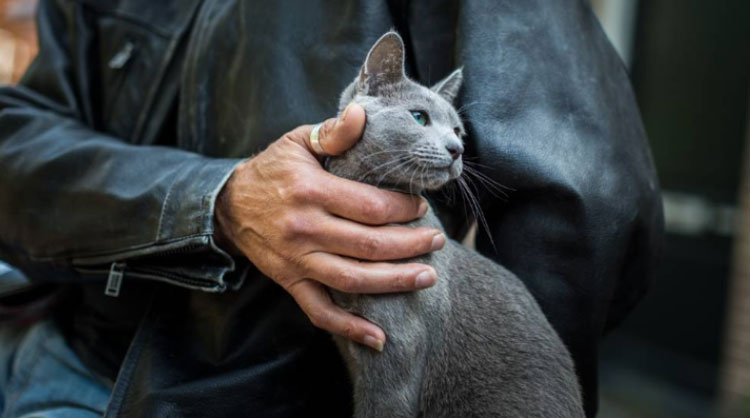
Posted by bravectosouthafrica – 06 February 2020
Cat Adoption, rather than shopping for a cat isn’t just a noble cause, but it’s also much cheaper than buying from a breeder or pet shop. Your new kitty’s adoption fee ordinarily covers expenses such as a vet check-up, vaccinations and neutering or spaying.
Most animal shelters or cat rescues nowadays will also assess their temporary tenants’ personalities. This makes identifying the right cat for your household that much easier – simply inform staff of your personality, preferences and lifestyle beforehand and you’re bound to meet your perfect kitty match.
If you’re picky about purebreds, fear not – many shelters and rescues also have quite a few of these cats in their care. Read on to learn whether owning a cat or cat adoption is really for you.
Your Lifestyle – Is Owning a Cat Right for You?
Before you have a fluffy bundle of joy join your household, it’s important that you ask yourself: “Does owning a cat align with my lifestyle? And if so, what cat will fit my lifestyle best?”
Just like different people, different cat breeds (and individual cats) have different needs. Some cats may require great amounts of attention, stimulation and enrichment from their owners. Others will be more independent and happy to spend longer periods of time in their own company.
Those who suffer from allergies will have to carefully consider the cat they adopt. Do your research to find out what breed will work best for your needs in terms of both lifestyle and health. There are numerous hypoallergenic cat breeds out there if you’re an allergy sufferer who’s desperate to adopt a cat. The Burmese, Russian Blue, Siamese and Siberian are but a few of these breeds – learn about more hypoallergenic breeds here.
Your household’s composition will also be a deciding factor. Households with other pets or young children may benefit from adopting an older, even-tempered and already socialised cat. This is why it’s so important for you to consult with shelter staff before making your final decision.
Domestic cats also tend to live long lives: it’s not uncommon for them to turn 20 years old. If you’re not ready for long term commitment, then this may not be the best pet for you.

Bringing Your New Cat Home
Change is stressful, so cat adoption can be a difficult process for both parties when you initially return home. You and your new cat need to get used to each other and they need to acclimate to their new environment as well.
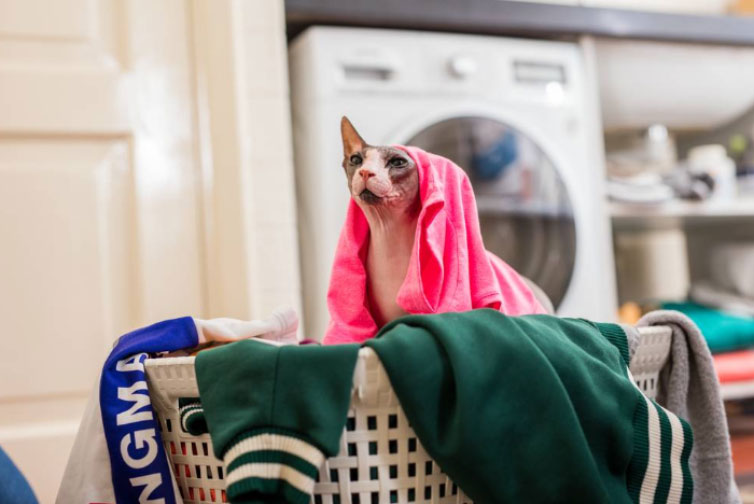
Creating a Safe Space for Your Cat
One of our main tips for new cat owners is to designate a safe space to your feline friend – a room where they’re able to start exploring their new home. A spare bedroom, bathroom or even an office is an ideal space. Utility rooms should be avoided as far as possible because the noise caused by a dryer and washing machine may scare your cat.
Must-have items for your cat’s safe room include a bed, food and water bowls and a litter box. Adding an item from your cat’s previous space – think a blanket, scratching pole or toy – will help put them further at ease, making their transition that much smoother.

The Adjustment Period After Cat Adoption
New cat owners may notice that their cat hides a lot. This is normal initial behaviour and we encourage you to supply them with hiding places in their safe space. It doesn’t have to be anything elaborate – a cardboard box or sheet draped over a chair will do just fine.
You’ll notice your cat becoming more confident, leaving their hiding places more and more as they get used to their new home’s sounds and smells. Allow your cat to be the one to make contact in the beginning. Sit with them in their safe space and gradually introduce treats, affection and play to the equation.
As you spend time with your cat in their safe room, you’ll start to bond. You may notice that your feline friend dislikes it when you pet them in some places or fears specific toys. This could be because of past trauma. Just be patient: some cats may take longer to adjust than others, but the payoff will make it all worthwhile. Your cat will start showing positive behaviours such as grooming, purring and stretching soon enough.
Be sure to introduce your cat to other parts of the house as their confidence grows. Take it one floor – or even room – at a time.
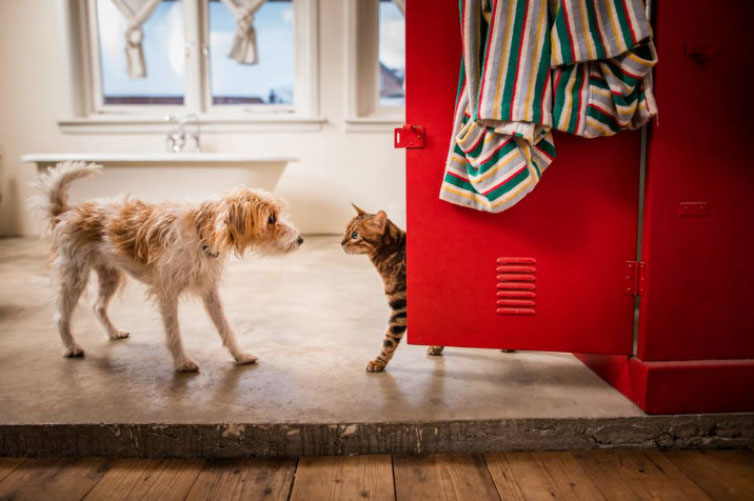
Introducing Other Pets
If you own any other animals, such as dogs, you should consider rubbing both your new addition and existing pets with soft cloths and introducing them to each other’s smells via cloth. You can also have your existing pets explore the safe space while your new cat is exploring elsewhere. This will help familiarise all household pets with each other before meeting face to face.

After the Adjustment Period – What Next?
Even after your cat is ready to leave their safe space, don’t restrict their access to the room. Because cats are extremely territorial, they may wish to retreat back to their original safe space when they become anxious or stressed.
Place your cat in this room during planned or known disruptions such as parties or New Year’s Eve (fireworks!). Your cat may also voluntarily retreat to their safe space during events such as thunderstorms. Just be mindful not to reward fear by babying your cat too much. Continue on as normal as possible during potential scary situations – it will make your cat feel more at ease.
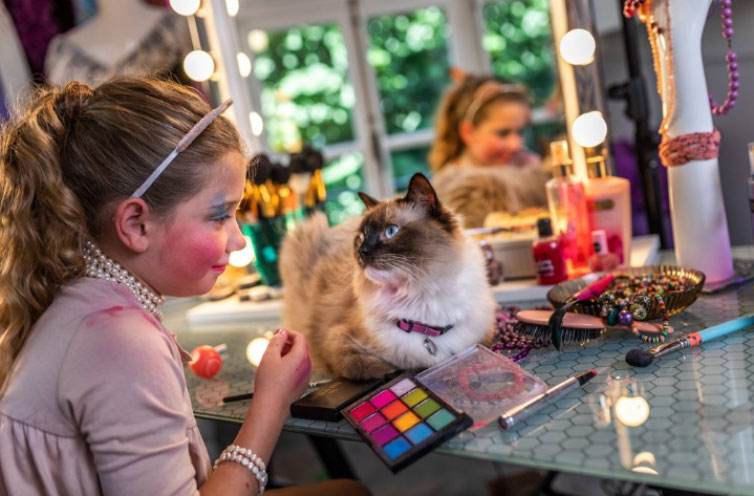
Selecting the Right Vet
After adopting a cat you’ll also have to identify a trusted vet you can keep on speed dial, should your beloved feline fall ill.
When choosing a vet, you should consider the following:
- Don’t just rely on online reviews. Ask pet owning friends in the area who their go-to vet is. Word of mouth is a powerful source of information, plus you’ll be able to ask questions about things that are important to you.
- Note the staff’s attitude when calling to make an appointment, as well as when visiting the practice. You want to entrust your cat to calm, collected and caring individuals with good bedside manner. The last thing you want to do is deal with unpleasant people when your cat is feeling unwell.
- Ask lots of questions to see if your personal ethics and principles on animal care align with that of the staff at the veterinary clinic. Your cat’s wellbeing should be equally important to both you and the vet.
- Take note of how busy a practice is. The busier the better is generally true – there’s a reason why everyone entrusts their beloved pets to a certain vet’s care.
- Talk about costs. You’ll want to find a vet that fits your pocket, while delivering outstanding care.
- Discuss after-hour care and general operational hours with the practice you’re considering. Finding out they aren’t available outside of regular hours can be a deal breaker.
- See if you can find a practice in close proximity to your home – not only does it cut down on travel time, but it will give you peace of mind should your cat experience a medical emergency.
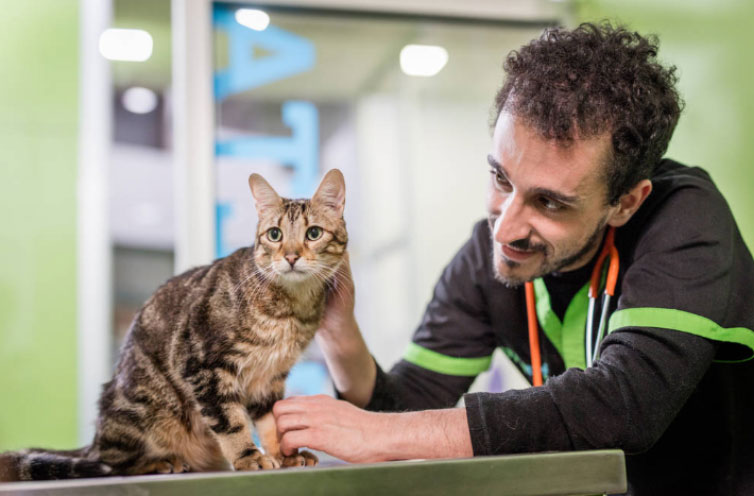
Cat Adoption and a Healthy Home
First time cat owners take note: whether you adopted your new cat from a shelter or rescued a stray, it’s important to treat your kitty against external parasites. Lucky for you, Bravecto® provides fast acting and long lasting protection against ticks, fleas and ear mites – ensuring your cat and home remains happy and healthy.
Bravecto® Spot-On for Cats is also quick and easy to use. Simply separate the fur at the back of your cat’s neck and apply a single dose directly to their exposed skin using the convenient Twist’n’Use™ applicator. Bravecto® can be used on cats that weigh more than 1.2 kg and are older than 11 weeks.
Did we mention the best part? You only need to re-apply every 3 months! Afraid you’ll forget? Don’t worry – just download Bravecto®’s handy reminder app here.
Cat adoption can be a wild ride, but there’s nothing more rewarding than finally bonding with your new feline friend. Enjoy every step of the journey together!

Subscribe to our Newsletter
Get to know your furry friend better! Sign up for all things dog- or cat-related.
The Hairy Facts about the dreaded hairball
12 April 2021
Help! My dog’s barking mad! Volume 2
12 April 2021
Your Itchy, Scratchy Cat – All About Cat Skin Problems
12 April 2021
The Dog’s Diet: A Bone of contention?
01 April 2021
Mango Fly Worms: How to Spot and Eliminate them
Posted on November 28,2019
Managing Mange And Mites In Your Dog
Posted on June 11,2018
Why Do Cats Purr and How? Learn What Your Cat Is Saying
Posted on October 14,2020
How to Get Rid of Ear Mites in Dogs
Posted on November 06,2019









